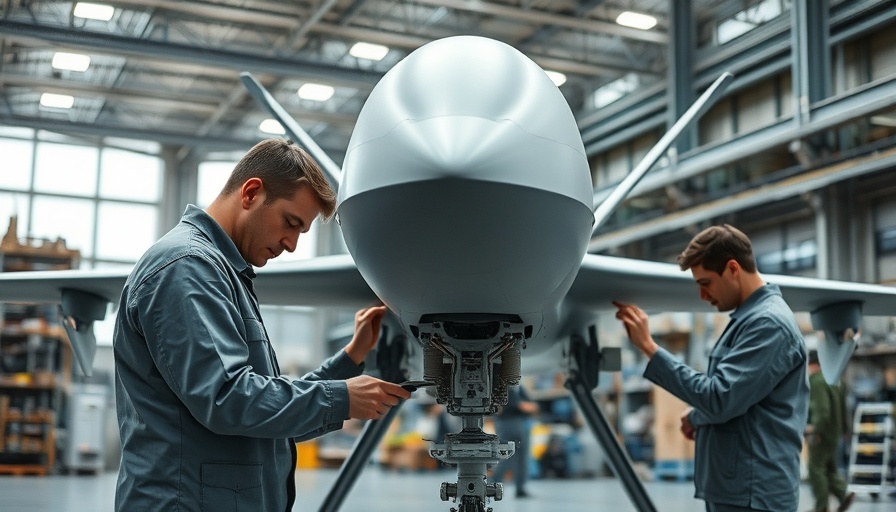
Russia's Drone Manufacturing Collapse: A Deeper Dive
As Russia's drone industry emerges as a key factor in its military strategy, the impending bankruptcy of AO Kronstadt, one of the nation's foremost drone makers, raises significant concerns about the future of defense technologies in the country. With financial turmoil worsened by sanctions and warfare, Kronstadt's difficulties highlight a concerning trend for the country's defense sector.
The Financial Strains of War
For the past two years, AO Kronstadt has struggled under an escalating debt burden that now exceeds one billion rubles. The company is urgently facing lawsuits, including significant claims from LLC Innovative Technologies and Materials and AO Research Institute of Modern Telecommunications Technologies, which represent a combined 371.7 million rubles of financial distress. These figures draw a stark picture of an organization on the brink of insolvency.
Analysts point to the exit of key financial backing, particularly AFK Sistema, as a recent catalyst for these challenges. This has forced the company into an increasingly precarious position, further exacerbated by sanctions that limit access to essential foreign components. The convergence of these financial pressures alongside escalating production demands due to state contracts has indeed put a sizable strain on Kronstadt's operations.
Impact of Sanctions on Drone Innovation
The sanctions imposed by Western nations since the onset of the Ukraine conflict have hindered Kronstadt's ability to secure vital technologies and materials necessary for producing high-quality drones. These restrictions have effectively cornered the Russian drone producer, restricting access to critical foreign technologies and imposing significant cost inflations. As a critical player in logistics and manufacturing in Russia's wartime efforts, the sustainability of Kronstadt's operations has come into question.
Insights from Industry Experts
Nikolai Ryashin, General Director of Rusdronport, articulates the industry sentiment: "The company will go the way of bankruptcy," signaling a shift in perception among vendors and subcontractors. This pessimism fuels a wave of legal claims as stakeholders scramble to position themselves favorably amidst the ongoing turmoil. The mention of Ukrainian strikes targeting the company’s production facilities compounds this dire situation, reinforcing the urgent need for strategic pivots in its operational framework.
The Consequences for Russia's Defense Strategy
As the Kremlin intensifies its reliance on unmanned systems, the potential bankruptcy of Kronstadt poses a profound question about the future of Russia's military technology. Known for their Orion and Inokhodets drones, which draw comparisons to advanced American UAVs, the company's fall could leave a significant void in Russia's operational capabilities. Whether through restructuring or mergers with other defense conglomerates, the need for innovative strategies in overcoming sanctioned barriers is clear.
Future of Russia’s Defense Manufacturing
The bankruptcy of AO Kronstadt signals more than just the collapse of a single company—it represents a larger systemic issue facing Russian defense production within a conflict-driven economy. Unless swift and meaningful intervention occurs, the loss of key players like Kronstadt could severely undermine the country’s technological advancements and global competitiveness in unmanned systems. This scenario leaves industry experts questioning if the Russian defense sector can adapt to the challenges presented by both external sanctions and battlefield losses in an increasingly complex geopolitical environment.
As the situation develops, stakeholders across the tech and military domains will need to monitor these changes closely to assess impacts on global drone technologies and military capacities. The fate of Kronstadt is emblematic of the greater challenges that confront companies operating in wartime markets—forcing a reexamination of existing strategies and production capabilities.
 Add Row
Add Row  Add
Add 




Write A Comment